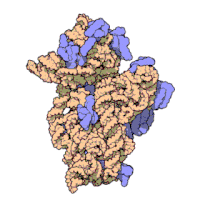
Photo from wikipedia
High-throughput 16S rRNA gene amplicon sequencing is an essential method for studying the diversity and dynamics of microbial communities. However, this method is presently hampered by the lack of high-identity… Click to show full abstract
High-throughput 16S rRNA gene amplicon sequencing is an essential method for studying the diversity and dynamics of microbial communities. However, this method is presently hampered by the lack of high-identity reference sequences for many environmental microbes in the public 16S rRNA gene reference databases and by the absence of a systematic and comprehensive taxonomy for the uncultured majority. Here, we demonstrate how high-throughput synthetic long-read sequencing can be applied to create ecosystem-specific full-length 16S rRNA gene amplicon sequence variant (FL-ASV) resolved reference databases that include high-identity references (>98. ABSTRACT High-throughput 16S rRNA gene amplicon sequencing is an essential method for studying the diversity and dynamics of microbial communities. However, this method is presently hampered by the lack of high-identity reference sequences for many environmental microbes in the public 16S rRNA gene reference databases and by the absence of a systematic and comprehensive taxonomy for the uncultured majority. Here, we demonstrate how high-throughput synthetic long-read sequencing can be applied to create ecosystem-specific full-length 16S rRNA gene amplicon sequence variant (FL-ASV) resolved reference databases that include high-identity references (>98.7% identity) for nearly all abundant bacteria (>0.01% relative abundance) using Danish wastewater treatment systems and anaerobic digesters as an example. In addition, we introduce a novel sequence identity-based approach for automated taxonomy assignment (AutoTax) that provides a complete seven-rank taxonomy for all reference sequences, using the SILVA taxonomy as a backbone, with stable placeholder names for unclassified taxa. The FL-ASVs are perfectly suited for the evaluation of taxonomic resolution and bias associated with primers commonly used for amplicon sequencing, allowing researchers to choose those that are ideal for their ecosystem. Reference databases processed with AutoTax greatly improves the classification of short-read 16S rRNA ASVs at the genus- and species-level, compared with the commonly used universal reference databases. Importantly, the placeholder names provide a way to explore the unclassified environmental taxa at different taxonomic ranks, which in combination with in situ analyses can be used to uncover their ecological roles.
Journal Title: mBio
Year Published: 2020
Link to full text (if available)
Share on Social Media: Sign Up to like & get
recommendations!